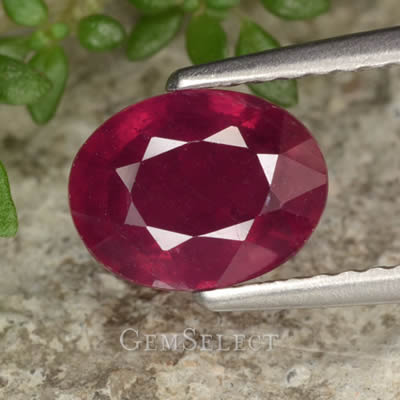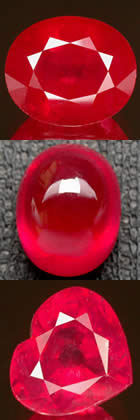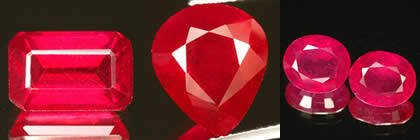Fracture-filled Ruby
If you're interested in rubies, you may have noticed how much of the rubies being sold by reputable dealers are described as "fracture-filled". Why is there so much of this material on the market? Is it really any good or should it be avoided? Discover our extensive range of fracture filled ruby for sale.

To understand why these rubies are being offered, it's important to understand something about the world demand for ruby, the supply of material and the recent history of prices.
Although both ruby and sapphire belong to the corundum family, rubies are significantly rarer than sapphires. The global demand for rubies far surpasses their available supply, leading to scarcity. Notably, renowned ruby deposits in countries like Thailand and Cambodia have been extensively mined and are now depleted. Similarly, the famed ruby mines in Mogok, Burma, have seen their output diminish to a mere trickle.
 In the last twenty years the main sources for ruby have been the Mong Hsu deposits in Burma (discovered in 1992), and the Madagascan mines (discovered in 2000). The Mong Hsu deposits were significant, but the Mong Hsu rubies require heat treatment to improve their color. Sizes have already declined and it is now rare to see Mong Hsu rubies over 1 carat. The Madagascan mines yield some larger material, but the demand is so enormous that the supply quickly disappears.
In the last twenty years the main sources for ruby have been the Mong Hsu deposits in Burma (discovered in 1992), and the Madagascan mines (discovered in 2000). The Mong Hsu deposits were significant, but the Mong Hsu rubies require heat treatment to improve their color. Sizes have already declined and it is now rare to see Mong Hsu rubies over 1 carat. The Madagascan mines yield some larger material, but the demand is so enormous that the supply quickly disappears.
In 2004, a gem lab in Chanthaburi, Thailand came up with an innovation that increased the supply of ruby on the market. They developed a technique to improve the appearance of rubies of good color, primarily from Madagascar, that are disfigured by fissures or surface cracks. These previously undesirable gems could be repaired using heat treatment with lead glass. The refractive index of corundum and lead glass are very similar, allowing light to travel through the stone and improving the color and clarity.
The new fracture-filling technique offers a promising solution for repairing rubies, many of which exceed 5 carats in size. However, due to the ease of detecting this treatment, it is commonly disclosed, resulting in adjusted pricing. As a result, fracture filled rubies are sold at a significantly lower cost compared to untreated rubies of similar color. In fact you won't find 10 or 15 carat untreated rubies on the market at all, and very few that have been only heat treated.
 Should you buy a glass filled ruby? Technically, the treatment is effective. Many of the fracture-filled stones look very good indeed. The Asian Institute of Gemology (AIGS) tested samples for durability and found them to be more durable than a typical emerald that has been fracture-filled with oil or resin. Gemological labs advises against excessive heating with a jeweler's torch, but found no negative effects from cleaning with detergent or ultrasonic devices. They recommend that hydrofluoric acid not be used on these gems, and that any recutting or repolishing should be performed with care.
Should you buy a glass filled ruby? Technically, the treatment is effective. Many of the fracture-filled stones look very good indeed. The Asian Institute of Gemology (AIGS) tested samples for durability and found them to be more durable than a typical emerald that has been fracture-filled with oil or resin. Gemological labs advises against excessive heating with a jeweler's torch, but found no negative effects from cleaning with detergent or ultrasonic devices. They recommend that hydrofluoric acid not be used on these gems, and that any recutting or repolishing should be performed with care.

